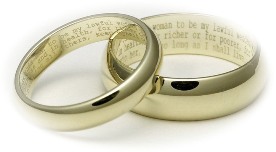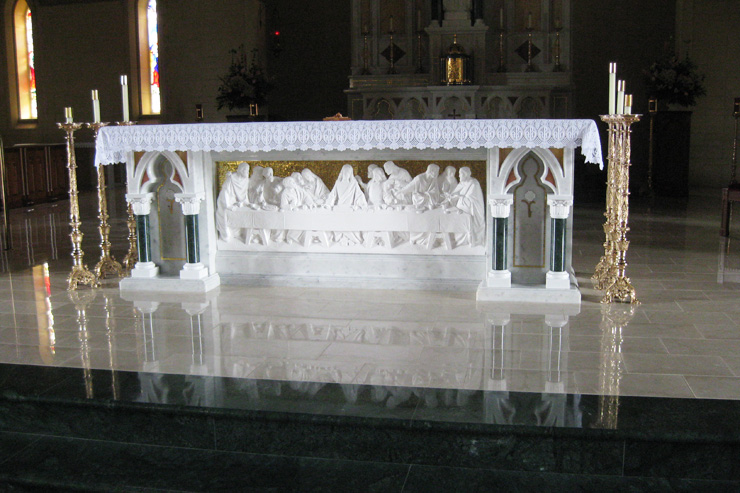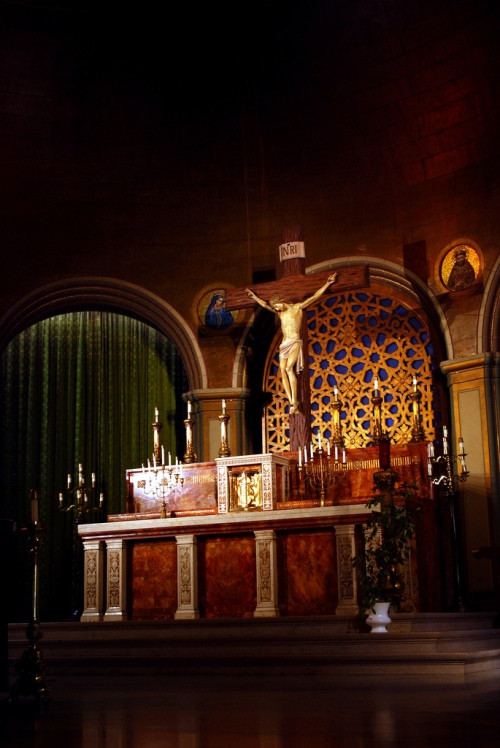 I passed through the metal detector at the Las Vegas Airport easily and uneventfully. While waiting for my wife, who was the inconvenient recipient of a more thorough random check, I turned to the attendant and told her that I was surprised to pass through the metal detector so quietly since I have entered the “metallic age” of life: gold in my teeth, silver in my hair, and lead in my pants. She allowed herself a controlled chuckle and said, softly, “That’s good.” Security personnel are not allowed to laugh audibly on the job. Then, I added, “Apparently the metal detector is not sensitive to metaphors”. Her smile told me that she understood what I meant, but I was thinking about how this image has wonderful applications for broader issues.
I passed through the metal detector at the Las Vegas Airport easily and uneventfully. While waiting for my wife, who was the inconvenient recipient of a more thorough random check, I turned to the attendant and told her that I was surprised to pass through the metal detector so quietly since I have entered the “metallic age” of life: gold in my teeth, silver in my hair, and lead in my pants. She allowed herself a controlled chuckle and said, softly, “That’s good.” Security personnel are not allowed to laugh audibly on the job. Then, I added, “Apparently the metal detector is not sensitive to metaphors”. Her smile told me that she understood what I meant, but I was thinking about how this image has wonderful applications for broader issues.
If the metal detector did read metaphors, who could pass through without setting off the alarm? Certainly not platinum blondes, people with iron wills, or bronzed surfers. Surely no one associated with the Pittsburgh Steelers. Metaphors have a rightful place in poetry. But they are not to be identified with the premises from which they take flight as metaphors. Henry David Thoreau once said, “If you have built castles in the air, your work need not be lost; that is where they should be. Now put foundations under them.” Metaphors are not foundational.
Former U. S. Vice-President Al Gore and his wife, Tipper, put together a book on marriage that they titled, Joined at the Heart. Their view of marriage, like that of so many others in our Post-Modern world, uses the sweet sounding metaphor to replace the more rigorous reality. It is the classic form of sentimentality, preferring the pleasant illusion over the stubborn and definable facts of life. Any combination of partners can be married as long as they are joined at the heart – a plenitude of cooks purifies the broth!
John Paul II’s “Theology of the Body” does not make this mistake. It is a clear, firm, and realistic understanding that marriage, first and foremost, takes into account the distinctive and complementary bodies of the male and the female. This may sound earthy, but Genesis tells us that the very meaning of the name Adam refers to the earth out of which he was fashioned. His wife, Eve, according to that same Biblical chapter, was “bone of his bone and flesh of his flesh.” No metaphors at this point, but a sober recognition of the solidity and distinctiveness of the male and female bodies.
A Catholic nun by the name of Margaret A. Farley, like sundry others, views marriage the way the Gores do, as a metaphor without a physical foundation. In her book, Just Love, she states that “same-sex relationships and activities can be justified according to the same sexual ethic as heterosexual relationships and activities”.
Love between husband and wife involves the distinctiveness of their complementary bodies. Conjugal intimacy between husband and wife is corporeal, and only in this sense can it be open to the transmission of new life. A marital relationship may be soaring, resplendent, and rapturous. But it must first be bodily in a very specific way. The Catholic Church is a kind of marriage detector that recognizes a real marriage in a way analogous to the manner in which a metal detector recognizes real metal and not its metaphorical substitute.
The Latin maxim, “Ad astra per aspera” (to the stars through difficulties) indicates that we can attain lofty heights only if we accept humble beginnings and are willing to work to overcome difficulties. Another 19th Century American poet, Josiah Gilbert Holland, understood well that a metaphor has meaning only when it is mounted on real experience:
Heaven is not reached at a single bound;
But we build the ladder by which we rise
From lowly earth to the vaulted skies,
And we mount to its summit round by round.
By making marriage metaphorical, every interpersonal arrangement can qualify as a marriage, just as, for a metal detector that reads metaphors, everyone in some way is metallic. At that point, marriage would mean nothing. It would become so inclusive that it would include its contradictory and therefore exclude itself. John Paul II’s “Theology of the Body,” as well as Scripture, reminds us that there is no real marriage without male and female bodies, united as one, and lovingly disposed to the procreation of new life.













